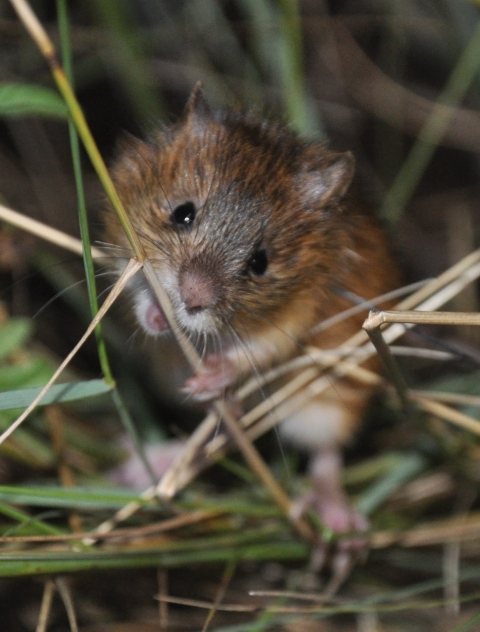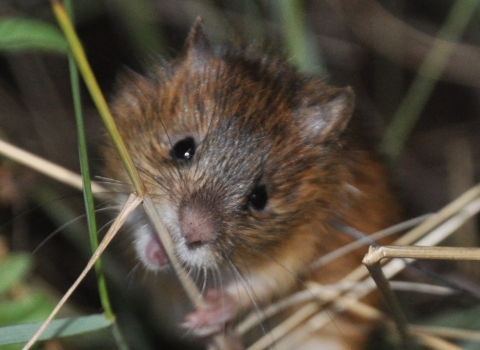ALBUQUERQUE, NM—Following a 60-day public comment period, the U.S. Fish and Wildlife Service (Service) has finalized a recovery plan for the endangered New Mexico meadow jumping mouse, a rare rodent found primarily near streams and wetlands in parts of New Mexico, eastern Arizona, and southern Colorado. The New Mexico meadow jumping mouse was listed as endangered under the Endangered Species Act (Act) in 2014. In 2016, 13,973 acres of critical habitat was designated in New Mexico, Colorado, and Arizona.
Recovery planning is one step in a process to address threats to endangered and threatened species. Recovery plans provide a road map for private, tribal, federal and state cooperation in conserving listed species and their ecosystems. While a recovery plan provides guidance on how best to help listed species achieve recovery, it is not a regulatory document. The recovery plan identifies site-specific management actions that will guide recovery of the New Mexico meadow jumping mouse to the point at which protection under the Act is no longer needed.
The final recovery plan is available on the New Mexico meadow jumping mouse ECOS ECOS
Environmental Conservation Online System (ECOS) serves a variety of reports related to FWS Threatened and Endangered Species.
Learn more about ECOS page: https://ecos.fws.gov/ecp/species/7965
An updated Species Status Assessment report for the New Mexico meadow jumping mouse, completed on January 30, 2020, informed the drafting of this recovery plan. The plan includes a brief summary of background and biological information on the species; a broad, prioritized list of site-specific recovery actions; objective, measurable delisting criteria; and estimated time and costs of recovery. A team with representation from the U.S. Forest Service, New Mexico Department of Game and Fish, Arizona Game and Fish Department, Colorado Parks and Wildlife, Southern Ute Indian Tribe, and Northern Arizona University developed the plan. Service biologists also considered public comments sent during a 60-day comment period.
The New Mexico meadow jumping mouse has specialized habitat requirements, characterized by tall, dense herbaceous riparian riparian
Definition of riparian habitat or riparian areas.
Learn more about riparian vegetation composed primarily of sedges and forbs associated with perennial flowing water. It requires abundant food sources during the summer so it can accumulate sufficient fat reserves to survive the long hibernation period. In addition, individual jumping mice need intact upland areas adjacent to riparian wetland areas, because this is where they build nests or use burrows to give birth to young in the summer and to hibernate over the winter.
Currently, all of the remaining New Mexico meadow jumping mouse populations are small and isolated. Areas designated as critical habitat for the New Mexico meadow jumping mouse include riparian corridors along rivers and streams, adjacent uplands, and areas that provide connectivity between and within populations.
America’s fish, wildlife, and plant resources belong to all of us, and ensuring the health of imperiled species is a shared responsibility. We’re working to actively engage conservation partners and the public in the search for improved and innovative ways to conserve and recover imperiled species. In the last 10 years, nearly 45 species were precluded from being listed, were downlisted, or were delisted completely in part due to the proactive conservation efforts of partners in Texas, Oklahoma, New Mexico and Arizona.


